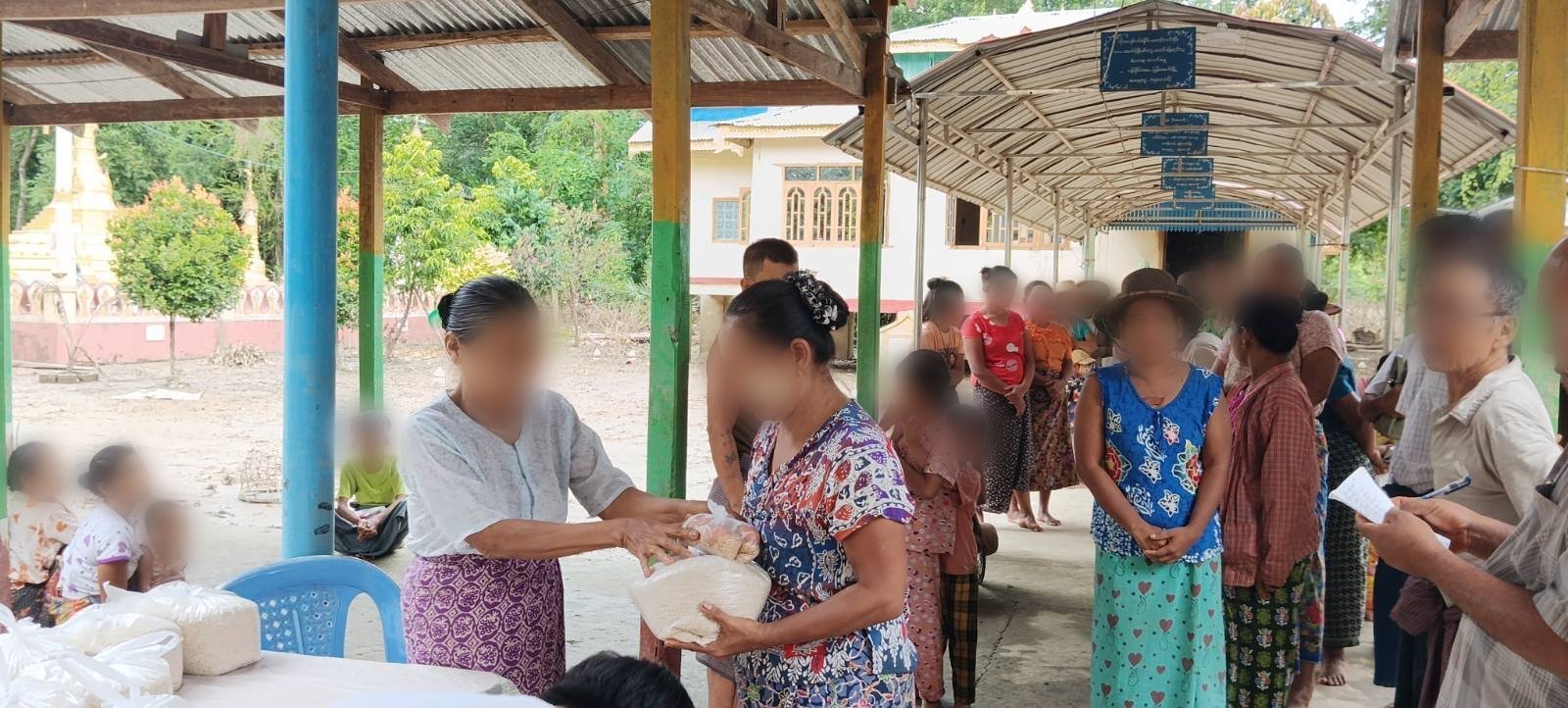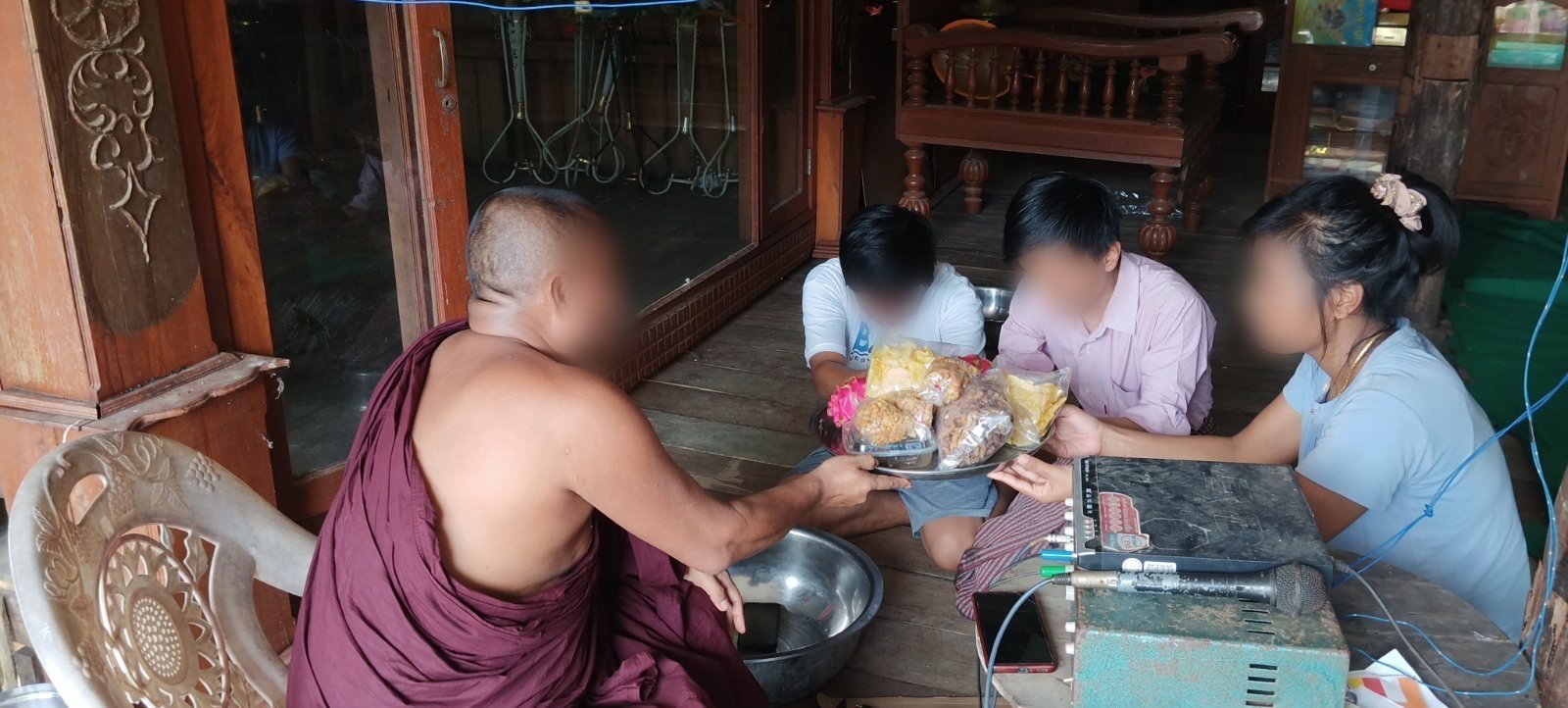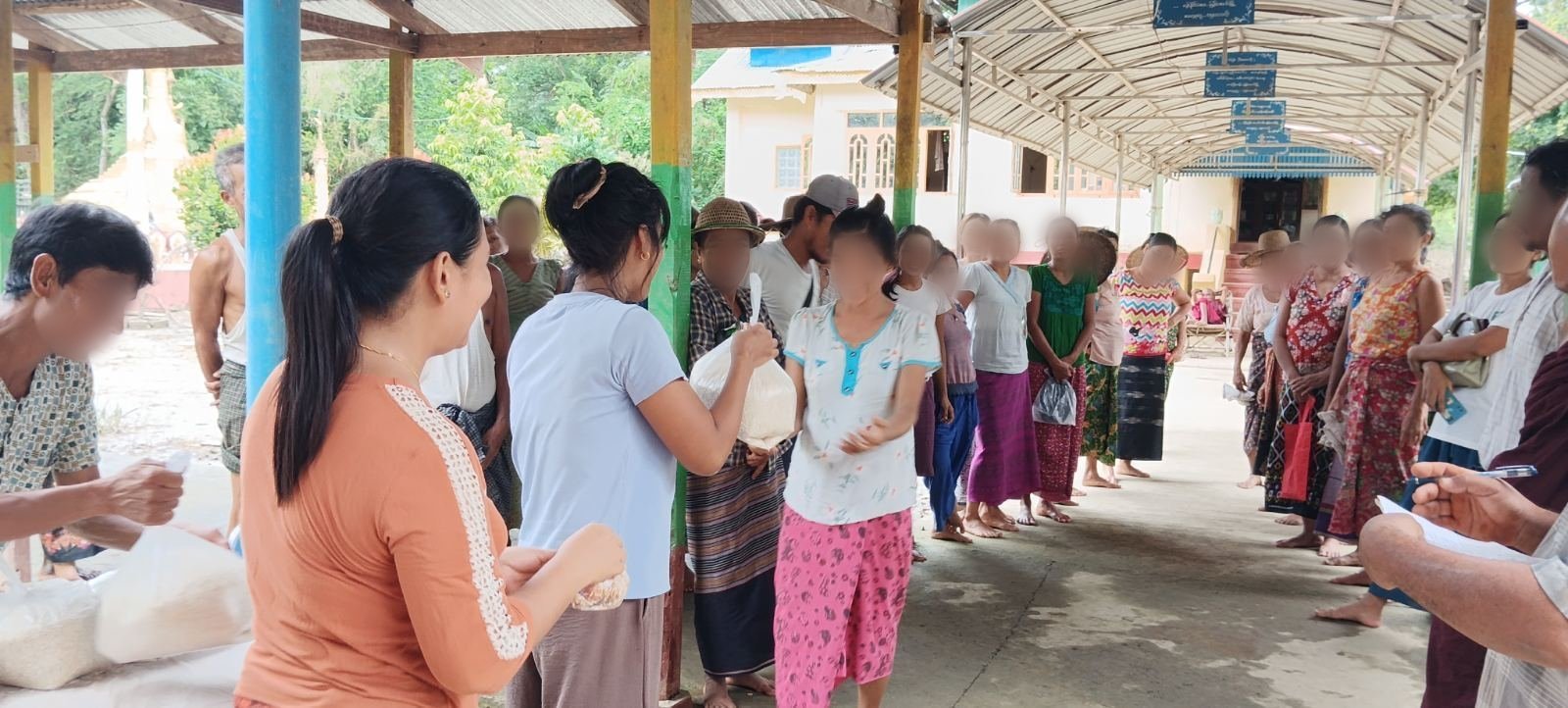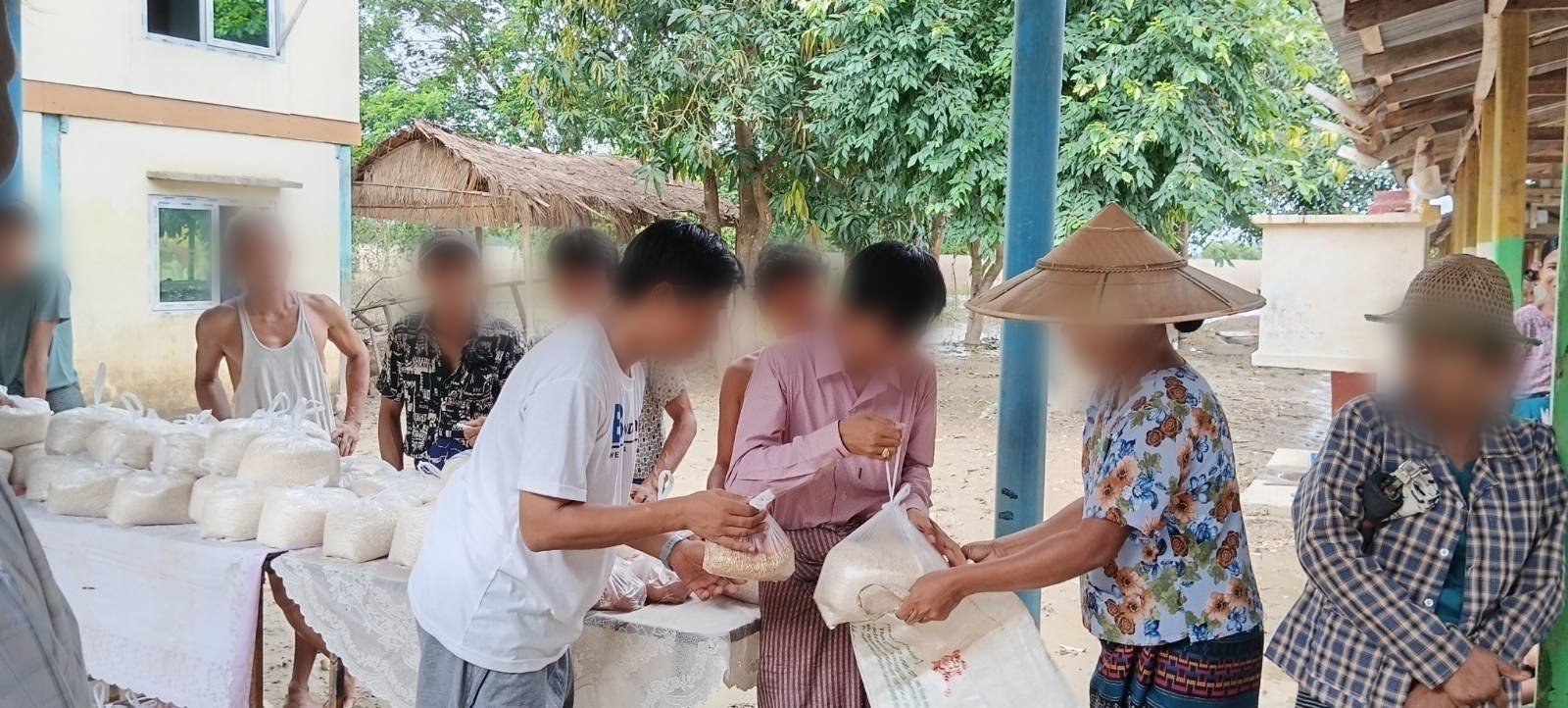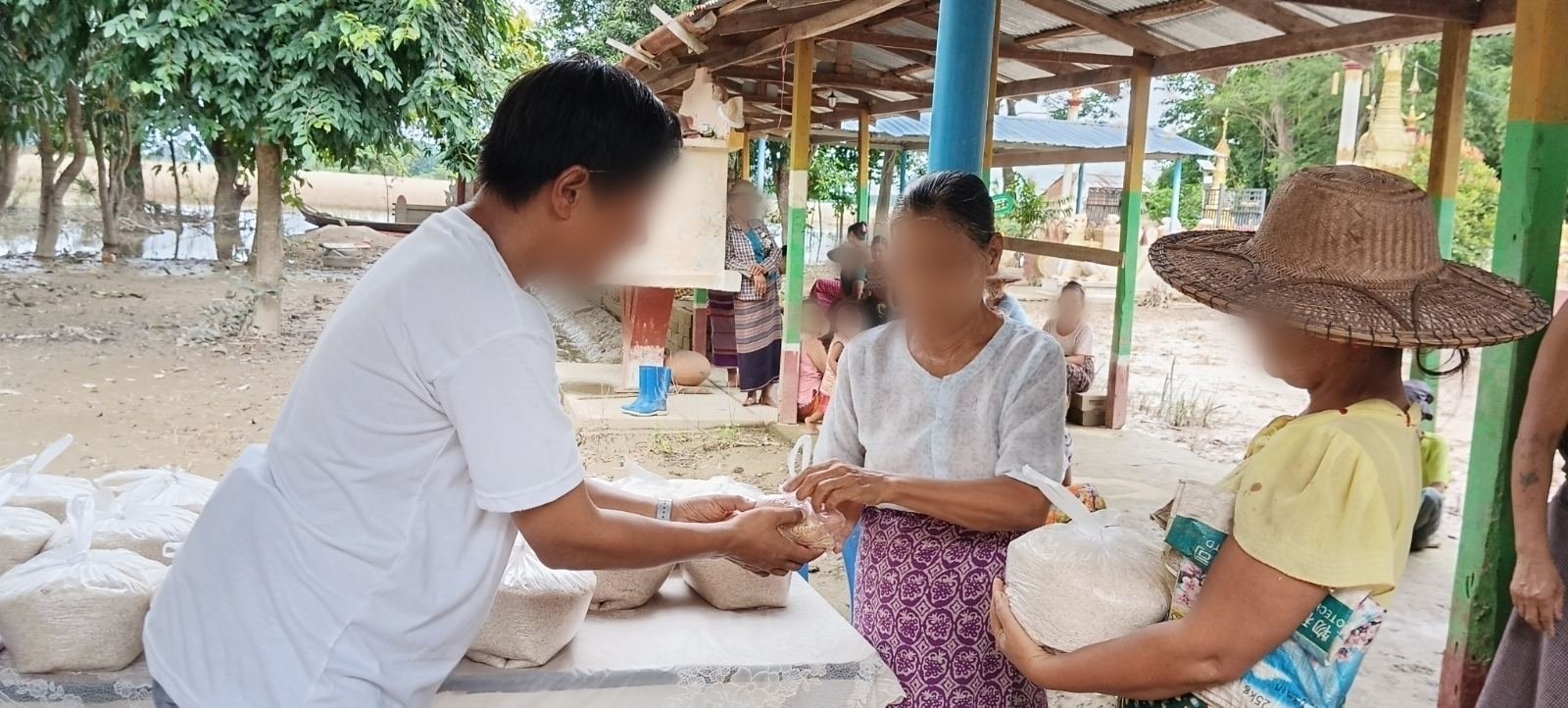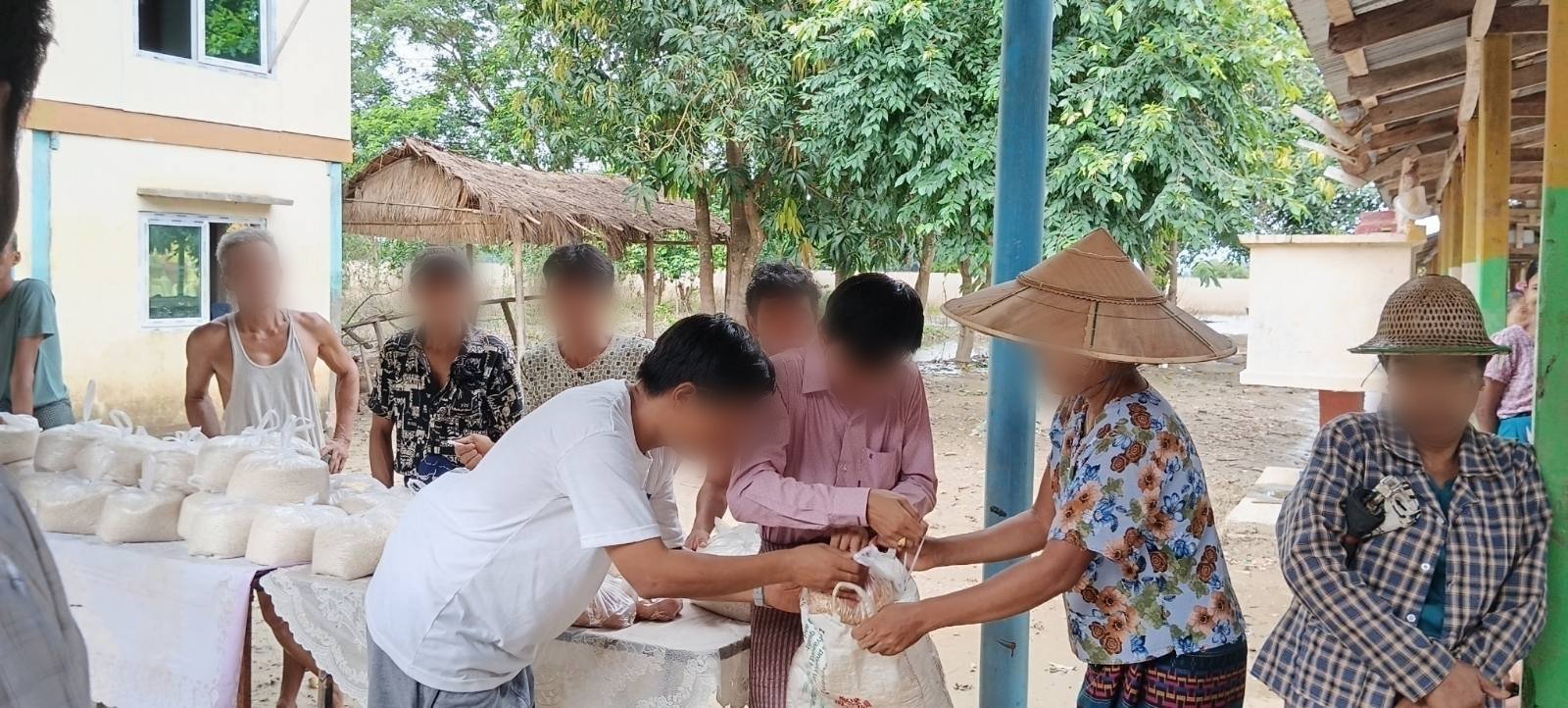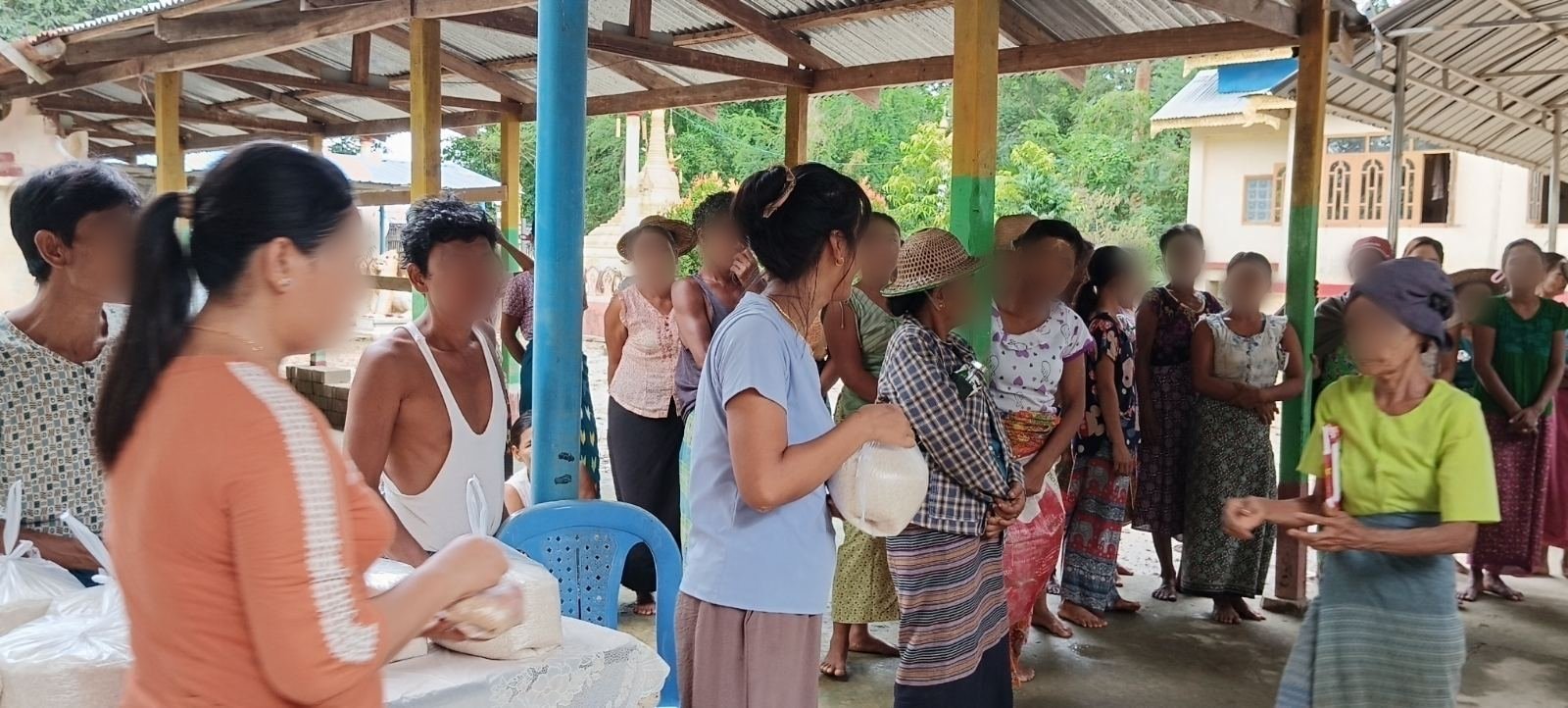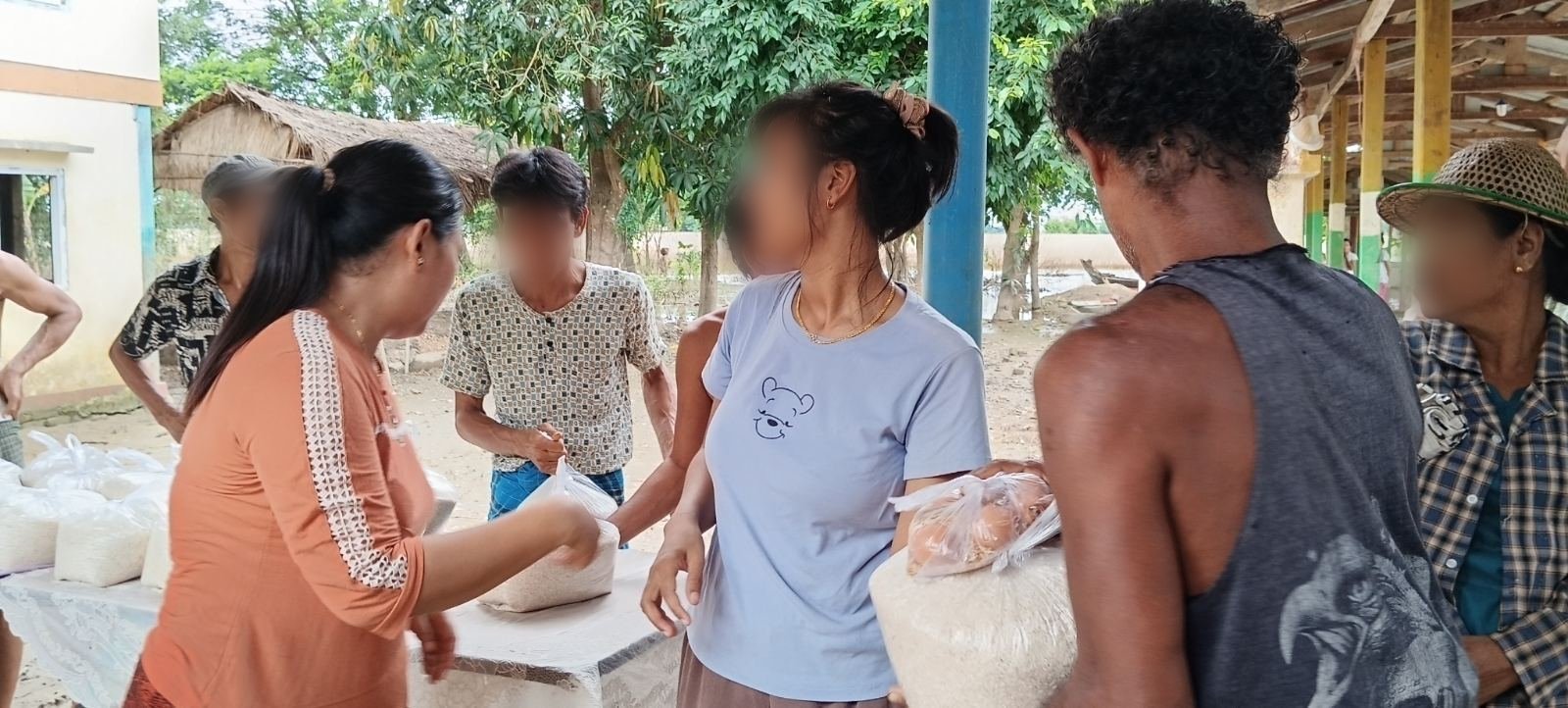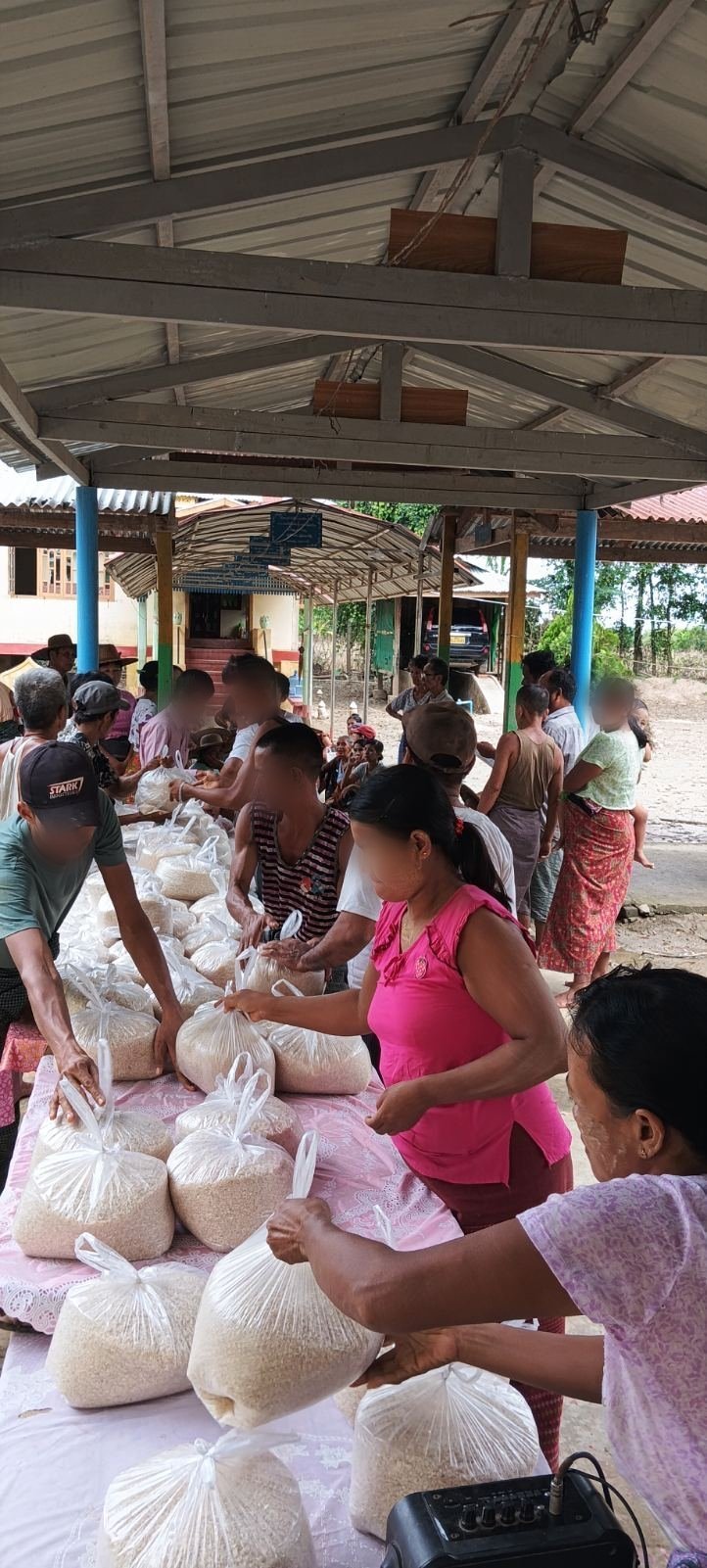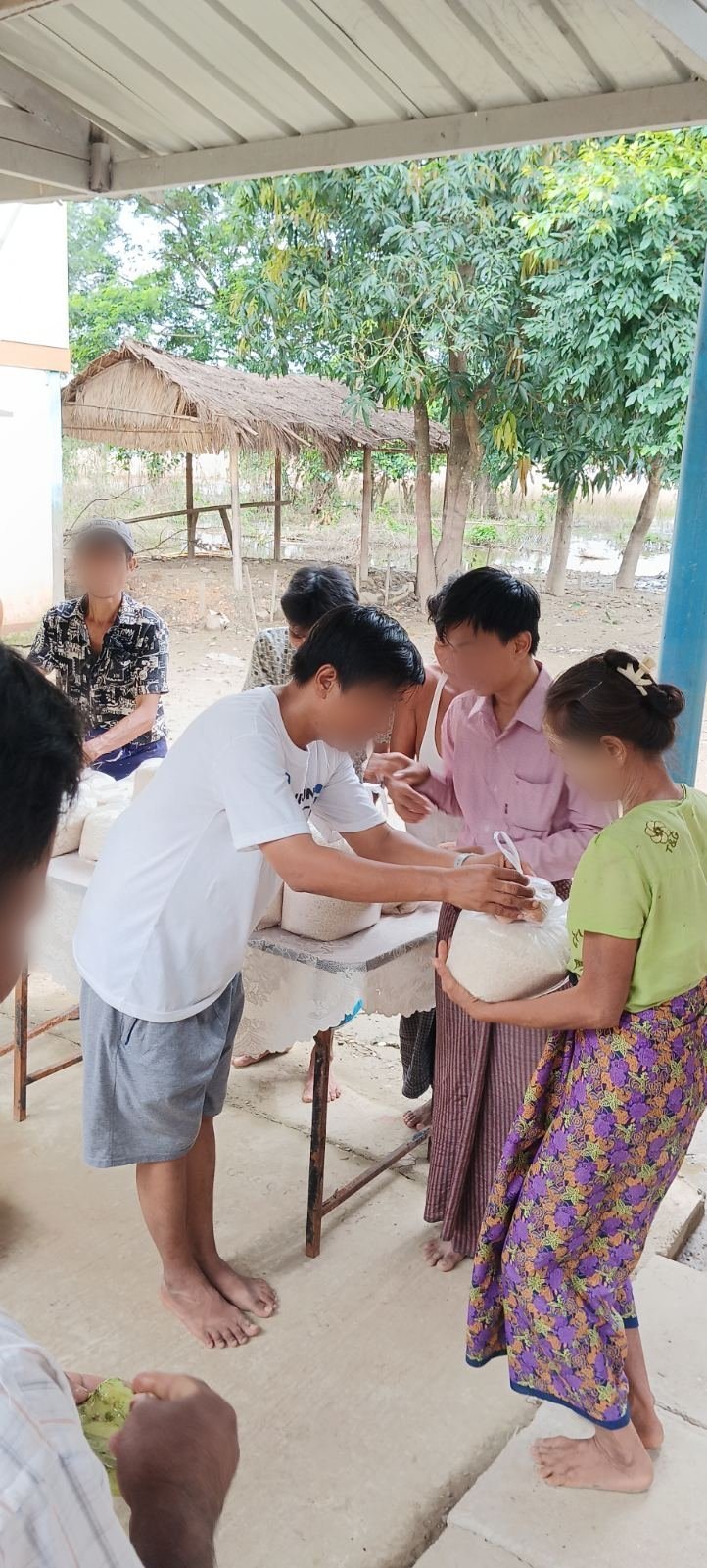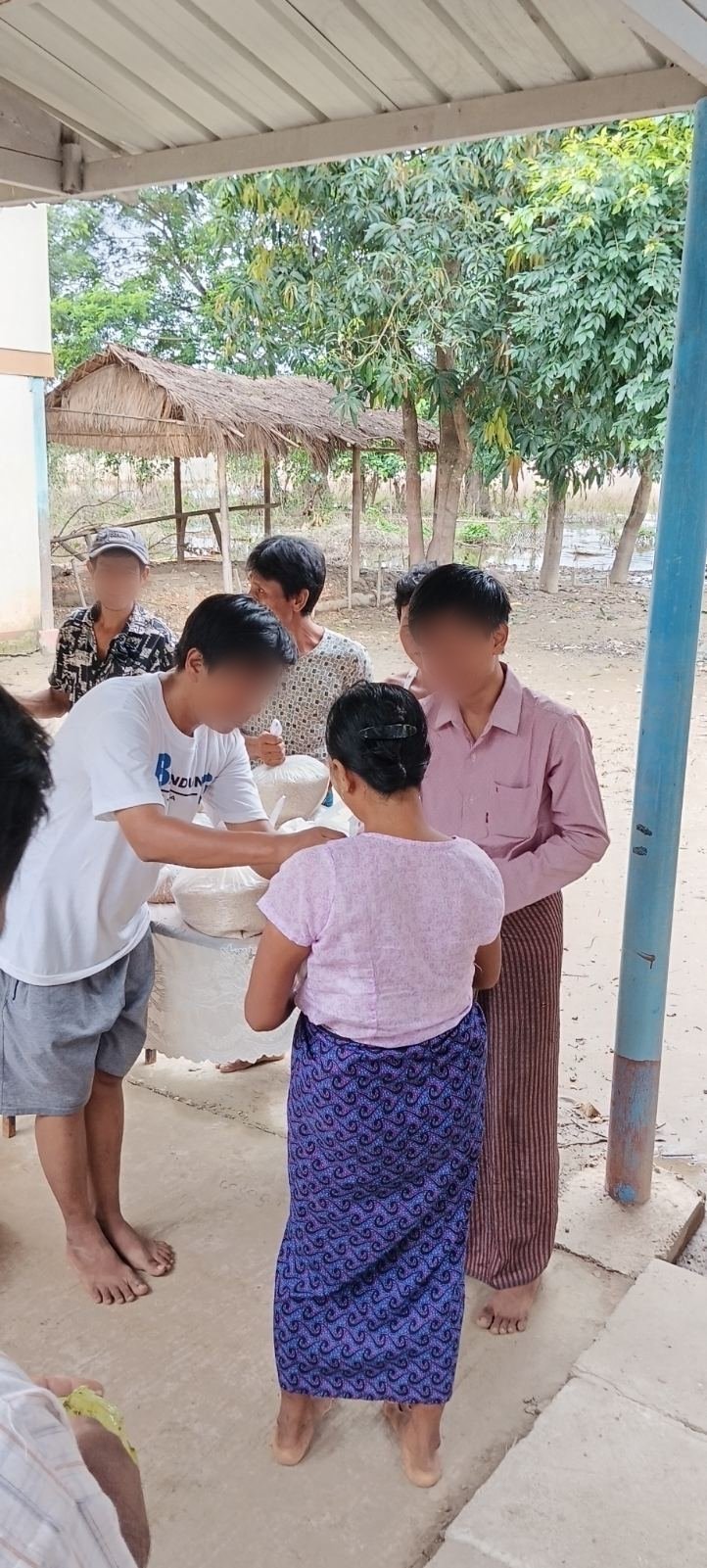Continued humanitarian support in the Ayeyarwady Region
As shared in a previous post, we successfully completed a donation trip to assist a flooded village in the middle of the Ayeyarwady River, where rising water levels caused severe devastation. Unexpectedly high floods submerged homes, destroyed crops, and left many families displaced, with some having to flee in the middle of the night as their houses were washed away. Despite the challenging conditions, including navigating a dangerously swollen river, we were able to deliver essential relief to the affected villagers. We are deeply grateful to our donors, whose support made this mission possible and brought much-needed aid to those in urgent need. In the following passage, we share further details about the nature of this trip which took place earlier in the year, through an essay written by our team leader.
As soon as we arrived in the village, we had to walk in the mud towards our stay-house. Fortunately, we knew that the water level already decreased and the people had to go in the boat from one house to another in the village before we came. We heard a lot of tragedies from the villagers and I talked to one aged woman who visited our stay-house.
The old woman who lives with her two grandchildren was groaning that she did not expect this high rise of water level this year, though it was usual to encounter the floods in the monsoon season in the past years. In her house, five of the seven stairs were fully sunk, and two stairs were only left above the water level. Since she has to take care of the grandchildren whose parents are living and working in Thailand, she and her husband cannot work and had nothing to eat. That was why she had a sack of peas that they grew and harvested during the growing season before the flood, and gave it to a monk who is her relative, as an exchange, and asked for rice for them. She explained that the rise of the river water level was too fast to flood in the village, as it rose 1 Taung (about 1.5 feet) per time that the water level increased. Over the last month, she and her family had nothing to eat: even the vegetable plants, such as the climbing-wattle tree in the backyard of her house, were fully sunk, so there were no vegetables to eat. The people from the town across the river did not dare to cross the river and come to the village to help the villagers because the river was too wide and dangerous to cross; they just went and donated food to the flood victims who moved to the town and stayed at a pagoda compound. Hence, the villagers who could not evacuate the village and continued to stay there were in hardship for food.
We could donate 2 Pyis (4 kilos) of rice and 10 eggs for each household, and we could help 198 families of flood victims from two villages named Kyaung-kone and Zay-kyon. Our team traveled to the monastery where we gathered the beneficiaries and donated the relief food items to them. It was pleasing to see that the vulnerable villagers were happy to receive the help as there was no one who had helped this village yet. In other villages, there were some relief aid donations from their villagers in Thailand who are working there, and they sent funds to help their villages. Here in this village, there was neither local nor overseas donation to help the villagers. We saw that most of the aged people in this village could not even come and walk to the donation site. There was still some water undried in the monastery compound.
From the stay-house to the monastery, a local volunteer took our team in a small boat as they did not want us to walk in the water, though the water level was high up to the level of an adult’s knee. The monk also sent another small boat, and our team rode and sat in it until it reached the gate of the monastery. We let the neighbors or relatives of the aged people receive the relief items on the latter’s behalf, and we saw only a few aged women could come to take the items. One aged woman was too tired of walking in the water, and our volunteers helped her to carry the items back to her house. After all the donations were distributed, we also went to two houses where an aged couple with poor eyesight and an aged man lived, and we delivered the rice and eggs to them. We were suggested by the local volunteers to go and help those two families who live in a shabby hut outside of the villages. The aged man completely lost his eyesight and hence could not go anywhere. We heard about the thankful and inspiring efforts of the local village volunteers who worked hard to make this donation happen.
Fortunately, the ferry disembarked near the west gate of the monastery where we were donating. This location was quite closer to the monastery than the jetty they used to disembark at, and where we disembarked. When they transported the rice sacks and eggs, the water level in the monastery compound was higher than what we saw, and the whole monastic compound was fully covered with water. Also, the way from the place where the ferry disembarked to the monastery was still covered with water, and hence the local volunteers had to carry the rice sacks on their shoulders, walking in the water.
The women volunteers went to the monastery in the two evenings to put the rice and eggs into smaller bags. One and a half hours after our arrival in the village, the donation started as the monk and the local volunteers invited the villagers to come and receive the donation items at 1:30 pm. We went to the monastery in a boat and saw that the monastery compound was also badly flooded this year. Before the monsoon, the monk was planning to renovate the old wooden Dhamma Hall building and build a new reinforced hall in its place. He did not expect the extreme high rise of the water level, and the water level this monsoon rose higher than the normal line of the water that had flooded in the past years. Another building in the monastic compound, which is an ordination hall where he lives, was almost touched by the rising water. Fortunately, his car was about to be washed away as the water level rose up to half its tires.
When we arrived at the monastery, some of the villagers had already arrived. We started the donation earlier as we wished to donate to the people who had already arrived. At the end of the donations to the flood victims, we also donated 1 sack of rice (48 kilos) to the abbot, who had shared his rice with the villagers during the rain and the rise of river water level before we could go and donate.
The donations were truly a lifeline for the villagers, providing much-needed relief to those who had been suffering for weeks without sufficient food or supplies. Their gratitude was evident in every smile and gesture as they received the rice and eggs we brought. Many of them, like the elderly woman we met, had been facing extreme hardships, with no outside help reaching them until our team arrived. The villagers' resilience in the face of such difficult circumstances was inspiring, and it was heartening to see how much the simple act of providing basic foodstuffs could alleviate their immediate struggles.
What stood out the most was how appreciative the community was. These were people who had been left behind, trapped by the rising floodwaters, with no means to escape or find help. The donations represented not just sustenance but a reminder that they were not forgotten. Every grain of rice and every egg symbolized the compassion and care of those who had contributed, a gesture that went beyond physical nourishment to offer hope and reassurance in their darkest times. The villagers’ heartfelt thanks were conveyed not only in words but in the tears of relief and the warm embraces they shared with us and the local volunteers. The impact of these donations was profound, and it underscored just how crucial continued support is for communities still battling the consequences of natural disasters.
